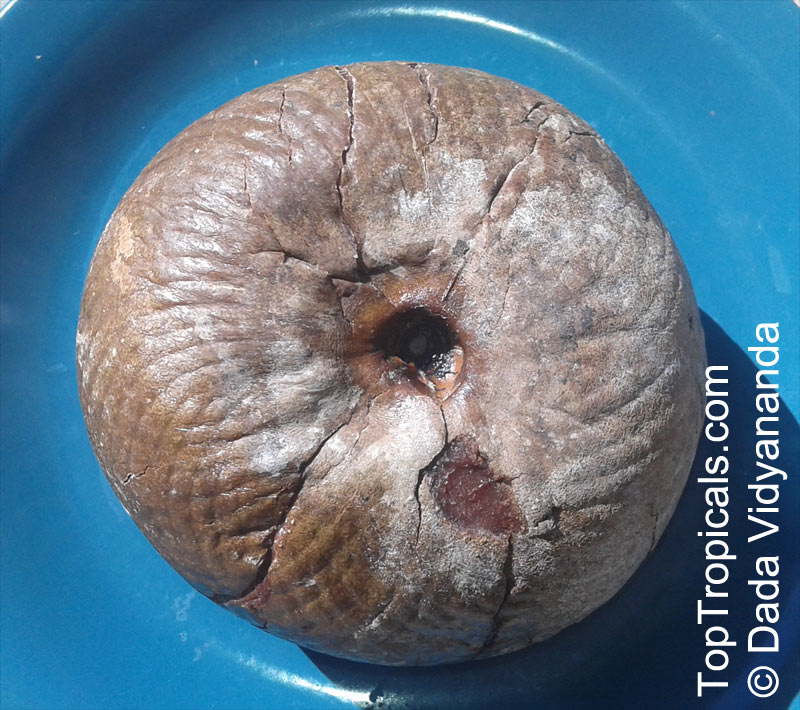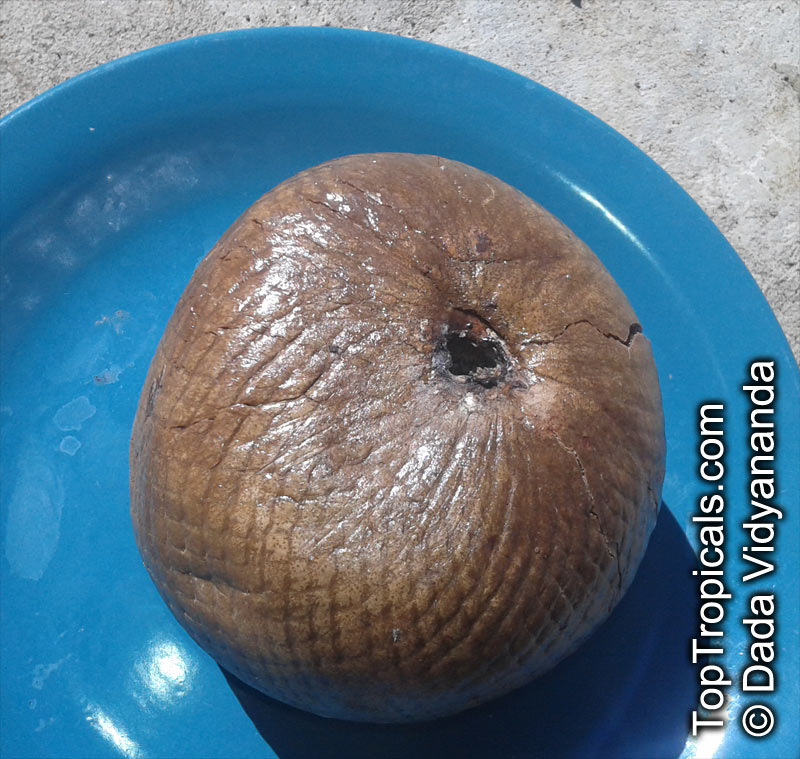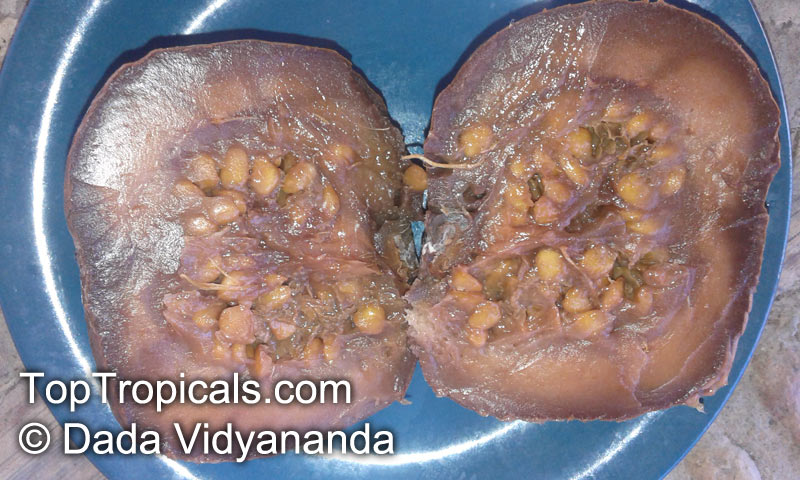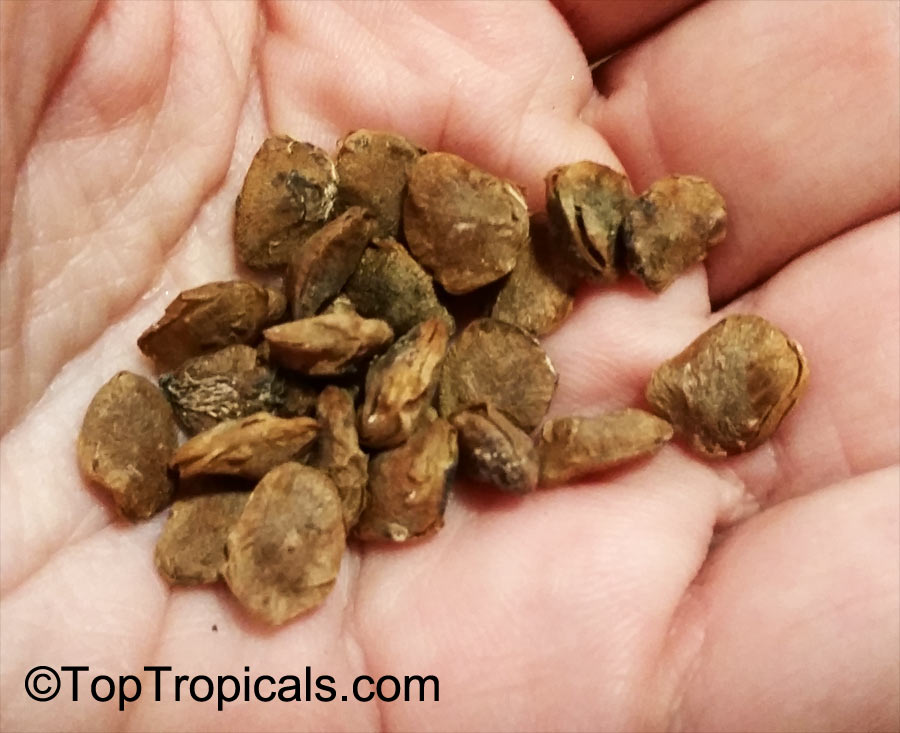Borojoa patinoi (Borojo)
Top Tropicals Plant Encyclopedia
Botanical name: Borojoa patinoi
Common name: Borojo
Family: Rubiaceae
Origin: Amazonia and Central America






Growing Borojo (Borojoa patinoi) is best done in USDA Zones 9-11, with an ideal temperature of 75-80F and humidity of 85%. The Borojo tree prefers semi-shade but can tolerate full sunlight as well. It has a slow growth rate, reaching heights of 10-20 feet, and should be watered regularly. The Borojo produces white to off-white flowers when mature, which produce the small fruits which are highly sought after.
Borojo fruits contain many beneficial vitamins and minerals, which are used within traditional ethnomedical practices. In traditional cuisine, the Borojo fruit is made into juices, compotes, marmalades, candies and wine. Aside from its ethnomedical practices, it is also very nutritious and considered an aphrodisiac and its juice is called jugo del amor. Borojo has one of the highest levels of water soluble B vitamins among fruits.




